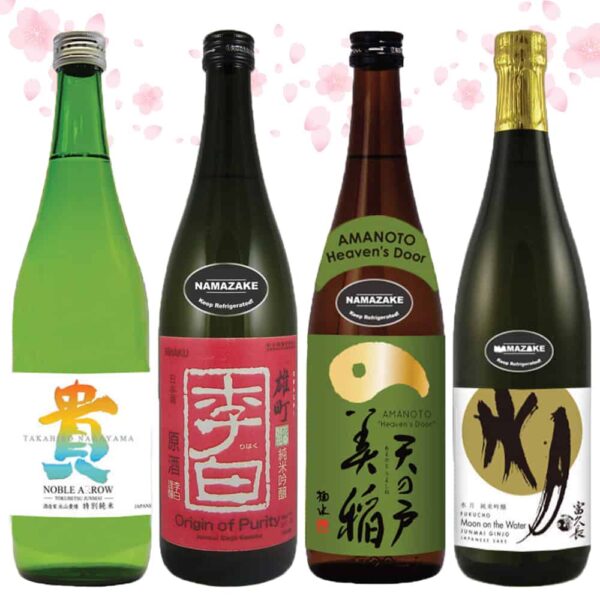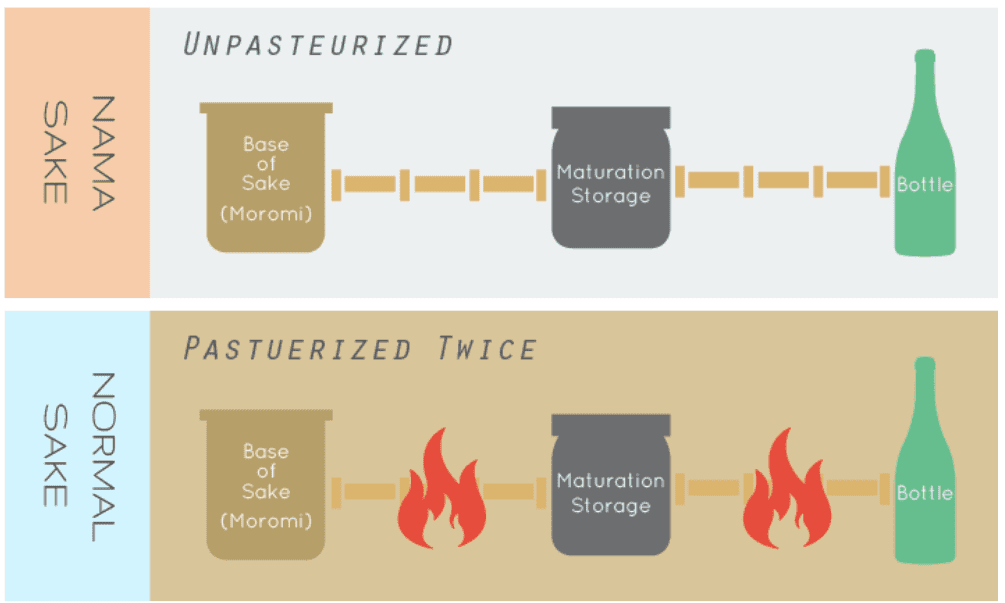
In Japan, Nama-zake is an annual favorite. At the end of the winter brewing season, Nama-zake heralds spring. After brewing, most sakes are pasteurized, heated to kill bacteria and deactivate enzymes, but Nama-zake is different.
Nama-zake is completely unpasteurized, and no-pasteurization means it is bold and fresh, and it has a distinct aroma and flavor compared to regular sakes.

Images from https://www.sake-talk.com/what-is-nama-sake/
The pasteurization process is used to stabilize the taste of sake by stopping the enzymes that change the quality of sake. Along with the development of refrigeration, bottling, and transportation technology, Nama-zake became available in many parts of the country in Japan.
However, normally, Nama-zake that reaches the U.S. is pre-sold to a few high-end restaurants, and only rarely could it be found in retail outlets outside of Japan.
© 2020 | D.C. Sake cō